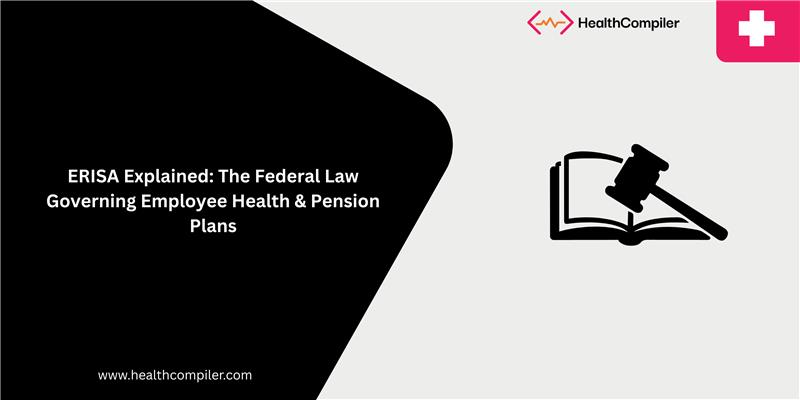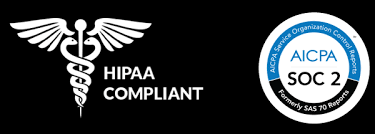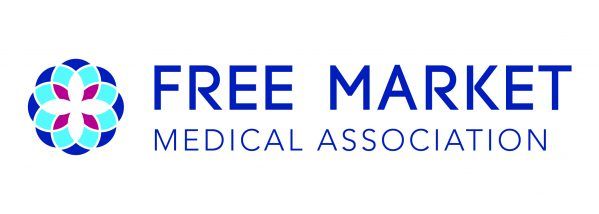ERISA Explained: The Federal Law Governing Employee Health & Pension Plans

If you offer employee health or retirement benefits, there’s one law you need to know inside and out: ERISA, the Employee Retirement Income Security Act. Passed in 1974, ERISA is the backbone of how most workplace benefits, both health and pension, are regulated in the United States.
For employers, understanding ERISA employee benefit plans isn’t just a compliance requirement. It’s a strategic advantage. Knowing how the law works helps organizations design benefits that are both compliant and cost-efficient.
Let’s break down what ERISA law covers, how it affects self-funded ERISA plans, and what rules employers should keep in mind.
What Is ERISA Law?
The Employee Retirement Income Security Act (ERISA) is a federal law that sets standards for most voluntarily established health and pension plans in private industry. Its goal is to protect employees who rely on these benefits for their health coverage and financial security.
Simply put, ERISA law ensures that when an employer offers a benefit plan, it’s managed with fairness, transparency, and fiduciary responsibility.
Key features include:
- Requiring plan sponsors to provide clear information to participants.
- Setting rules on plan management and fiduciary duties.
- Establishing a process for participants to file grievances and appeals.
- Giving employees the right to sue for benefits or breaches of fiduciary duty.
ERISA applies to both employee health benefits and pension or retirement plans, but the details differ slightly between the two.
ERISA Rules for Pension Plans
Under ERISA rules for pension plans, employers must follow strict guidelines to ensure that retirement benefits are properly managed and funded.
Key requirements include:
- Fiduciary Responsibility: Employers and plan managers must act solely in the interest of participants.
- Reporting and Disclosure: Plan details, funding status, and fiduciary practices must be transparent.
- Vesting Rules: Employees gain ownership of employer-contributed benefits after a certain period.
- Funding Standards: Defined benefit plans must meet specific funding requirements to guarantee payouts.
In short, ERISA creates guardrails that keep retirement funds safe and employers accountable.
ERISA and Health Plans
While ERISA originally focused on pensions, it now also governs employee health benefit plans, including medical, dental, vision, and disability insurance.
For employers, this means that any group health plan (whether insured or self-funded) must follow ERISA’s disclosure, reporting, and fiduciary standards. Employers must provide Summary Plan Descriptions (SPDs), outline employee rights, and ensure that claims and appeals are handled fairly.
If your company offers a self-funded ERISA plan, you’re effectively both the insurer and the plan administrator, making compliance even more critical.
Self-Funded vs. Fully Insured: Where ERISA Fits
One of the most important distinctions for employers is whether their health plan is fully insured or self-funded:
- Fully insured plan: The employer pays premiums to an insurance carrier, which assumes all claims risk.
- Self-funded ERISA plan: The employer pays employee health claims directly, using its own funds (often with stop-loss insurance for protection).
So, are self-funded plans subject to ERISA? Yes. In fact, self-funded plans are primarily governed by ERISA, which preempts most state insurance regulations. This federal oversight gives employers more flexibility to design benefits but also requires stronger administrative discipline.
In other words, self-funded ERISA plans allow for customization and potential cost savings, but they come with greater fiduciary responsibility.
Why ERISA Matters to Employers
Understanding ERISA employee benefits is about more than just compliance. It’s about control, protection, and trust.
For employers, the benefits of ERISA compliance include:
- Consistency: Federal regulation means uniform rules across states.
- Flexibility: Self-funded plans can be customized to reflect company culture and workforce needs.
- Accountability: Clear fiduciary standards protect both employers and employees.
- Transparency: Participants understand their rights and how benefits are managed.
When managed well, ERISA plans can be a foundation for sustainable, employee-centered benefits.
Building a Smarter Benefits Strategy
Navigating ERISA employee benefit plans doesn’t have to be overwhelming. Employers that take the time to understand the law gain the ability to build fair, compliant, and cost-effective programs that truly serve their workforce.
As more organizations move toward self-funded ERISA models, the role of data, analytics, and compliance tools becomes even more important. Understanding costs, tracking utilization, and maintaining transparency are key to staying compliant and optimizing value.
Final Thoughts
ERISA is more than just a compliance framework, it’s the legal foundation that keeps employee health and pension plans fair, transparent, and secure. For employers, it’s both a responsibility and an opportunity: to manage benefits wisely, to protect employees, and to design plans that make financial and ethical sense.
At Health Compiler, we help employers and benefits advisors translate compliance, claims, and care data into clear insights that strengthen their ERISA strategy. Our analytics platform makes it easier to monitor plan performance, track costs, and demonstrate fiduciary responsibility, without adding administrative complexity.
Because when data works quietly in the background, employers can focus on what really matters: building better health plans for their people.



